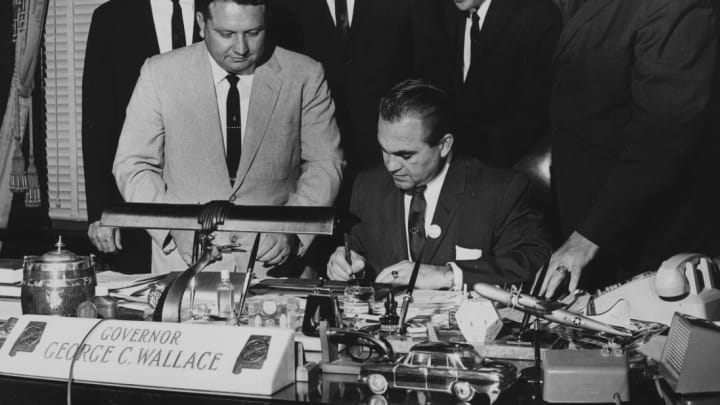No election cycle would be complete without a debate over whether or not the Electoral College should be abolished. But have we ever come close to actually replacing the system that seemingly everyone loves to hate?
The short answer is: Almost. Once. It all started when Richard Nixon was elected ...
The 1968 presidential election season was messy and contentious. The Vietnam War, widespread riots, the assassination of Robert Kennedy, and lame duck Lyndon B. Johnson’s dissolving popularity created a perfect political storm for a third-party candidate. In 1968, that candidate was former Alabama Governor George Wallace, who ran on the American Independent Party ticket against Republican Richard Nixon and Democrat Hubert Humphrey.
Famed segregationist Wallace was popular in the South, and when the ballots were counted, he ended up snagging 46 of the available 538 electoral votes. Though Nixon garnered 301 electoral votes and Humphrey went home with 191, the two were separated by less than 1 percent of the national total—a little over 510,000 votes. The disparity between the popular and electoral votes, as well as Wallace's success, led New York Representative Emanuel Celler to introduce House Joint Resolution 681 [PDF], a proposed Amendment to abolish the Electoral College and replace it with a system that required a president-vice president pair of candidates to win 40 percent or more of the national vote. In the event of a tie, or if no pair reached 40 percent, a runoff election would be held between the two tickets with the highest number of votes.
Proponents argued that this system was friendlier to third parties (while not being too friendly to third parties, as 50 percent was deemed to be), less complicated, and would virtually never result in contingent elections by the House and Senate for president and vice president (which is a possibility with the Electoral College).

The Amendment was passed easily by the House Judiciary Committee in April 1969. By September of the same year, Celler’s Amendment passed with strong bipartisan support in the House of Representatives.
President Nixon endorsed the proposal and urged the Senate to pass its version, now known as the Celler-Bayh Amendment [PDF] after it was sponsored by Senator Birch Bayh of Indiana. A Senate Judiciary Committee approved the proposal with a vote of 11-6 in August 1970.
But things looked grim for the Celler-Bayh Amendment as the proposal prepared to move to the Senate floor. The measure was expected to fall short of the 67 votes needed to pass, so Bayh called Nixon for backup. While he never withdrew his support, the president didn’t call for any more favors regarding the Amendment. On September 17, 1970, the Celler-Bayh Amendment was met with a hearty filibuster from both parties, mostly from Southern states.
Senators from Mississippi, Arkansas, North Carolina, Nebraska, Hawaii, and South Carolina argued that even though the Electoral College is complicated and has some potentially messy loopholes, it had served the country well and changing it risked widespread voter fraud, creating numerous splinter parties, and nationalizing the electoral process. But most explicit in his reasoning was Carl Curtis of Nebraska, who explained his state had 92/100ths of 1 percent of the electoral vote, but in 1968 would have had only 73/100ths of 1 percent of the popular vote, saying “I’m not authorized to reduce the voting power of my state by 20 percent.”
It was the beginning of the end for the best attempt in history to abolish the Electoral College. Eventually, the Senate voted to lay the Amendment aside to attend to other business. It officially died with the close of the 91st Congress on January 3, 1971.
This story has been updated for 2020.
